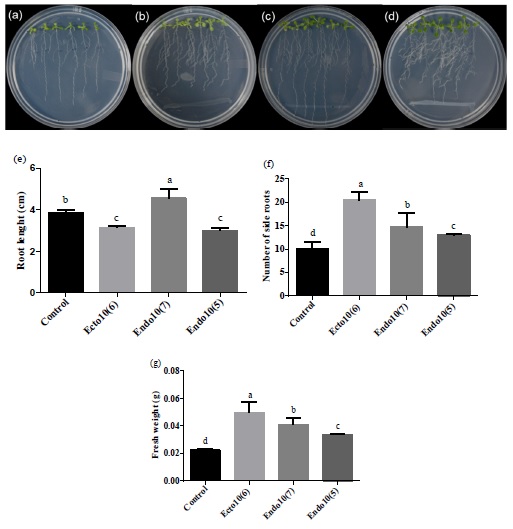Ef?fect of rhizobacteria isolated from Suaeda sp. in the growth of Arabidopsis thaliana and Solanum lycopersicum L. (Sahariana)
DOI:
https://doi.org/10.28940/terra.v41i0.1666Keywords:
IAA, phosphate solubilization, siderophores, PGPR, rhizosphereAbstract
The rhizosphere of the great diversity of plants is a complex ecosystem that houses thousands of rhizobacteria that promote plant growth. In the current investigation, three bacteria were isolated from the root of Suaeda sp., which were evaluated to determine the ef?fect of their inoculation on Arabidopsis thaliana at distances of 2 and 5 cm and in divided boxes. In the 2 cm test, we noticed that Endo10(7) and Endo10(5) stimulated the plants more than the control, while the proximity to Ecto10(6) caused them to wilt and die. However, at 5 cm, the bacterium that most promoted the development of Arabidopsis was Ecto10(6). In the divided box test, all three bacteria showed the ability to promote growth. In addition, a shade mesh assay was carried out with the inoculation of the bacteria in Solanum lycopersicum L. (Sahariana) and it was found that the promoting ef?fect was also observed in the germination and growth of tomato plants. Tests were conducted to determine its ability to produce IAA, siderophores, and solubilize phosphates. Through molecular techniques it was confirmed: the identity of Ecto10(6), Endo10(7), and Endo10(5) as Aneurinibacillus migulanus, Staphylococcus sp. and Bacillus cereus, respectively. Our results provide the rationale for suggesting that these rhizobacteria may increase the growth and development of Arabidopsis thaliana and Solanum lycopersicum.



















